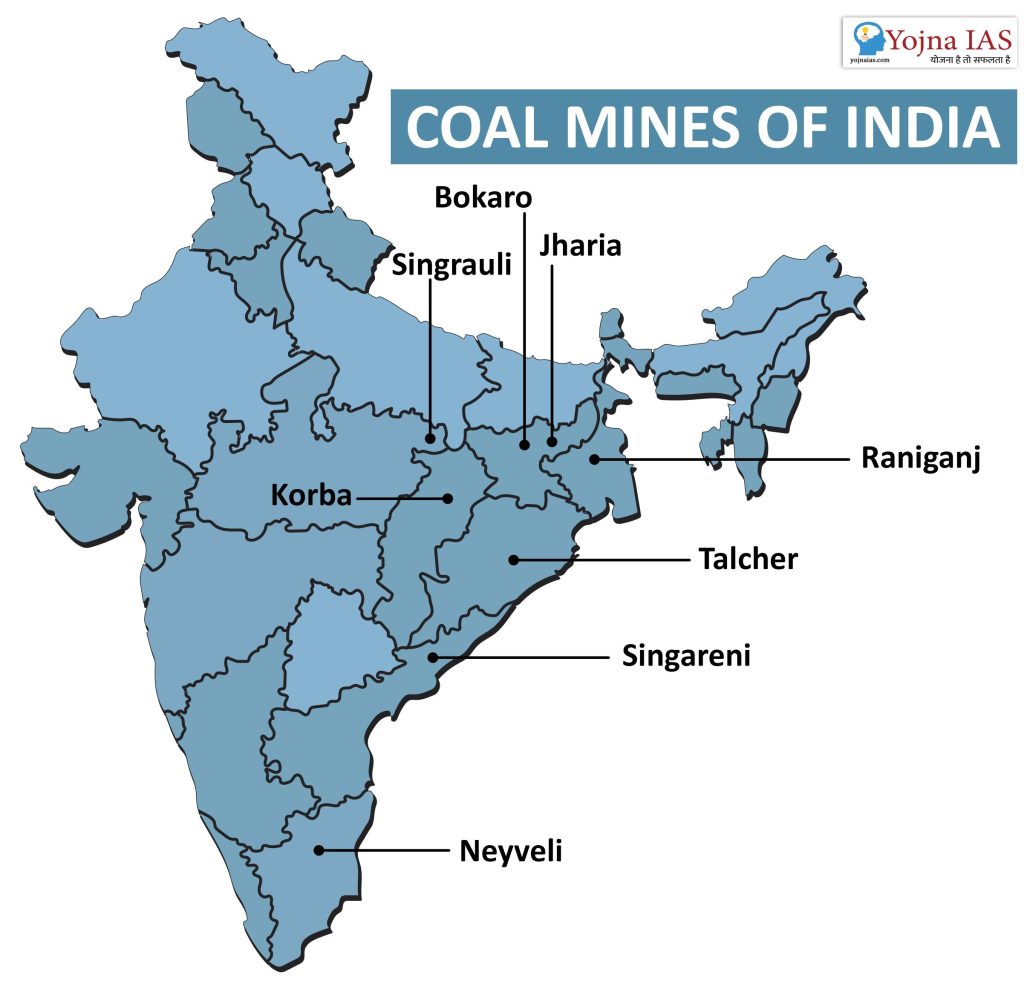11 Mar 2024 Coal Logistics Plan and Policy
This article covers ‘Daily Current Affairs’ and the topic details of ”Coal Logistics Plan and Policy”. This topic is relevant in the “Economy” section of the UPSC CSE exam.
Why in the News?
The Union Minister of Coal, Mines, and Parliamentary Affairs, Shri Pralhad Joshi, recently inaugurated a pioneering initiative named the “Coal Logistics Plan and Policy.” This event was orchestrated by the Indian National Committee World Mining Congress under the sponsorship of the Ministry of Coal and took place at Vigyan Bhawan, New Delhi.
What is the Coal Logistics Plan and Policy?
This comprehensive policy focuses on improving various aspects of coal transportation, including:
- Storage: Optimising storage facilities to ensure a steady flow of coal to power plants and other consumers.
- Loading: Streamlining loading processes to minimise delays and improve efficiency.
- Unloading: Implementing faster and more efficient unloading mechanisms at coal receiving points.
- Delivery: Establishing a robust and reliable network for coal delivery, prioritising a shift towards a railway-based system for First Mile Connectivity (FMC) projects. This shift is expected to bring about a significant reduction in rail logistic costs (estimated at 14%) and translate into annual cost savings of Rs 21,000 Crore.
Expected Outcomes
The Coal Logistics Plan and Policy is projected to deliver several positive outcomes, including:
- It enhanced affordability in coal transportation by reducing logistical inefficiencies and optimising costs.
- Increased efficiency in the coal supply chain, leading to faster delivery times and improved reliability.
- Reduced environmental impact through lower emissions and minimised air pollution. By shifting towards a more railway-based system, the plan aims to reduce reliance on road transportation for coal, which can significantly contribute to air pollution, particularly in urban areas.
- It has improved traffic flow by taking coal trucks off congested roads. This can benefit not only the environment but also commercial traffic flow and overall transportation efficiency.
The Status of India’s Coal Sector
- Coal represents the dominant energy source in India, accounting for roughly 55% of the country’s energy needs. Here’s a deeper look at India’s coal sector:
- Coal Reserves: India boasts significant coal reserves concentrated in its eastern and central regions. States like Odisha, Chhattisgarh, Jharkhand, and parts of Madhya Pradesh are the major contributors to domestic coal production, accounting for 75% of dispatches within the country.
- Types of Coal: India has various types of coal, including anthracite, bituminous coal, lignite, and peat. Bituminous coal is the most prevalent type, found extensively in Jharkhand, West Bengal, Odisha, and other central Indian states.

Challenges regarding coal in India
Despite its importance, coal presents several challenges for India. These include:
- Environmental impact: Coal mining and burning contribute significantly to air and water pollution, greenhouse gas emissions, and habitat loss. Finding ways to mitigate these environmental impacts while ensuring energy security is a critical challenge.
- Health risks: Exposure to coal dust and emissions from coal-fired power plants poses health risks for communities residing near mining and power generation sites. Respiratory diseases and other health issues are a concern.
- Land acquisition and rehabilitation: Acquiring land for mining projects often displaces communities and disrupts livelihoods. Proper rehabilitation and resettlement programs are crucial but often face shortcomings, leading to social and economic hardship for affected populations.
- Technological limitations: Widespread adoption of clean coal technologies like carbon capture and storage (CCS) remains limited due to cost and technical complexities. Research and development efforts are underway to make these technologies more viable.
- Balancing energy security and climate goals: India faces a balancing act between ensuring reliable energy sources for its growing economy and meeting its climate change mitigation commitments. At COP28, India advocated for a “phase down” approach towards coal power instead of a complete “phase out” to manage this transition.
Why India Advocates for “Phasing Down” Coal
Despite the challenges, India advocates for a “phase down” approach towards coal rather than a complete “phase out.” Here’s why:
Energy security: Coal currently plays a vital role in ensuring a stable energy supply for India’s industries, businesses, and households. A sudden shift away from coal could lead to disruptions in energy availability, impacting the economy and daily life.
Economic considerations: Coal mining and related industries are significant contributors to India’s economy, supporting millions of jobs, particularly in the eastern and central regions.
Way forward
Optimise Coal Use: Enhance efficiency throughout the coal lifecycle and invest in cleaner technologies for power plants.
Embrace Renewables: Prioritise solar, wind, hydro, and biomass to reduce coal dependence and build a resilient energy system.
Promote Sustainable Mining: Implement environmentally conscious practices during mining and strengthen regulations for environmental compliance.
Download Yojna daily current affairs eng med 11th March 2024
Prelims practise question
Q1. Consider the following statements: (UPSC Prelims-2019)
- The coal sector was nationalised by the Government of India under Indira Gandhi.
- Now, coal blocks are allocated on a lottery basis.
- Till recently, India imported coal to meet the shortages of domestic supply, but now India is self-sufficient in coal production.
Which of the statements given above is/are correct?
(a) 1 only
(b) 2 and 3 only
(c) 3 only
(d) 1, 2 and 3
Answer: A
Mains practise question
Q1. What are the expected outcomes of the Coal Logistics Plan and Policy, and how does it intend to enhance affordability, efficiency, and environmental sustainability in coal transportation?
I am a content developer and have done my Post Graduation in Political Science. I have given 2 UPSC mains, 1 IB ACIO interview and have cleared UGC NET JRF too.


No Comments